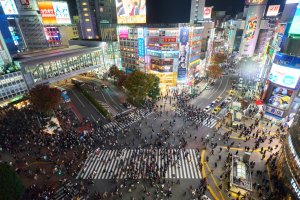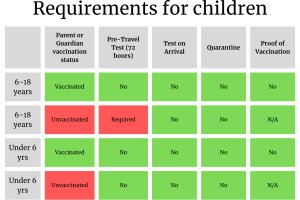After what has felt like an eternity to many, Japan is set to open its borders for visa-free, independent travel as of October 11th. The entry cap, which was set at 50,000 people a day, will also be lifted at the same time.
There still are a few requirements that visitors will need to meet for entry, so if you're planning a trip in the near future be sure to stay up to date with the latest regulations.
Please note, while the information in this guide is correct at the time of writing, we always recommend referring to Japan's Ministry of Foreign Affairs website for the most up-to-date guidance.
Vaccinations

Travelers are still required to have three doses of an approved COVID vaccine, or submit the results of a negative PCR test before their visit (within 72 hours prior to departure). The list of approved vaccines can be found on Japan's Ministry of Foreign Affairs website.
The proof of vaccination requirements are as follows:
- All relevant items described below should be listed on the certificate either in Japanese or English: Name, date of birth, product name or manufacturer of vaccines, vaccination date, and number of COVID-19 vaccine doses administered. Please note that COVID-19 vaccination certificates in languages other than Japanese or English are considered as valid if the translation (Japanese/English) is attached and all the items listed above are clearly identifiable.
- The proof of vaccination certificate should be issued by an official body, such as a government.
The Ministry of Foreign Affairs website does note that mix and match doses are acceptable provided you've had three in total – i.e. you could have 2 x Moderna and 1 x Pfizer and you're considered as fully vaccinated with three doses.
For children, the rules are slightly different. Please refer to the table below.

Visa-free Travel

The list of countries with visa-free status can be found on Japan's Ministry of Foreign Affairs website. At the time of writing, there are 68 countries on the visa-free list, and citizens of those countries and regions receive 90 days of visa-free travel. Do note that from that list, the visa-free timeframe is shortened to 15 days for citizens of Indonesia and Thailand, 14 days for citizens of Brunei, and 30 days for citizens of the United Arab Emirates.
If your country does not feature on the visa-free travel list, you will still need to apply for a tourist visa via the usual channels.
To confirm, the Visa-free travel status means you no longer need to register your plans via a travel agency. In saying that, if you do want or need travel agent services, our team here at Japan Travel is always willing and able to assist. Details on how to contact our travel agents can be found on our tours page here.
Sayonara to quarantine

Japan will also be removing its quarantine requirement as of October 11th. Before that date, travelers from countries deemed as high-risk are required to take a test and quarantine depending their vaccination status.
Mask wearing

A number of questions came through from our followers on social media asking about mask wearing requirements and regulations. As many of you already know, Japan is no stranger to mask wearing – people here wore masks when ill well before the pandemic, and will no doubt continue to do so in the future. The suggestions on mask wearing can be found on the Ministry of Health, Labor, and Welfare website.
To summarize from their site, at present:
- Wear a mask when meeting with the elderly or spending time in a hospital. Remove your mask if you do not need it outdoors, to prevent heatstroke in summer.
- When Outdoors: You do not need to wear a mask outdoors when you are approximately 2 meters apart from others, or when you are not talking at a distance of less than 2 meters.
- When Indoors: You do not need to wear a mask indoors when you are approximately 2 meters apart from others and when you are not talking.
- For Children: Children don’t need to wear masks at a distance of approximately 2 meters from others. All preschool children are not required to wear a mask.
































